Remote Config Parameter Settings
This document introduces the contents that can be checked on the detail screen of the remote config.
Configuration of the details
From the remote config detail page, you can check the following.
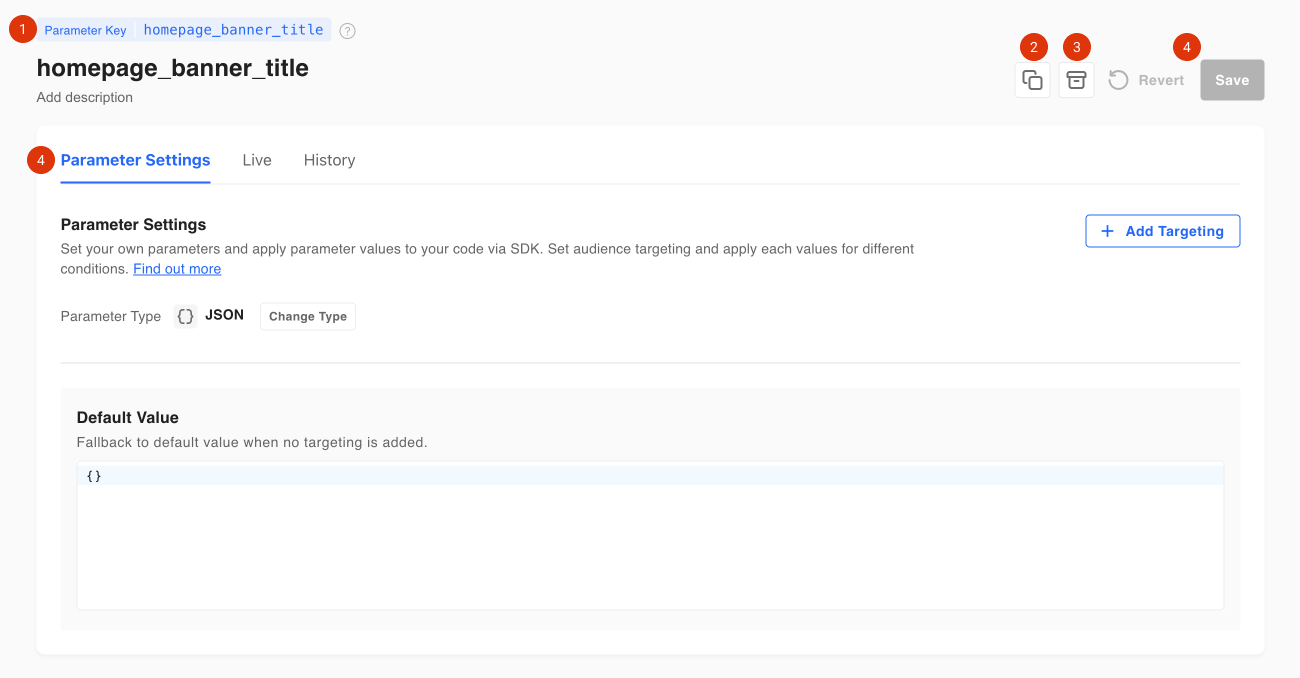
Default
-
Parameter information
You can check your parameter key here.
Click add description to edit parameter description. -
Copy to other environment
Copy parameter key and its settings across Development environment <-> Production environment. -
Archive parameter
Archive any parameter keys that are not in use. Note that once a parameter key is archived it cannot be reused. -
Top right corner
Revert: Revert to the last save time. Once you click the save button, all previous entries will be lost.Save: Click this button to save changes. All saved changes are applied immediately.
- Tab menu
The detailed menu for remote config is split into three tabs (Parameter settings, Live for real-time exposure status, History).
Parameter Settings
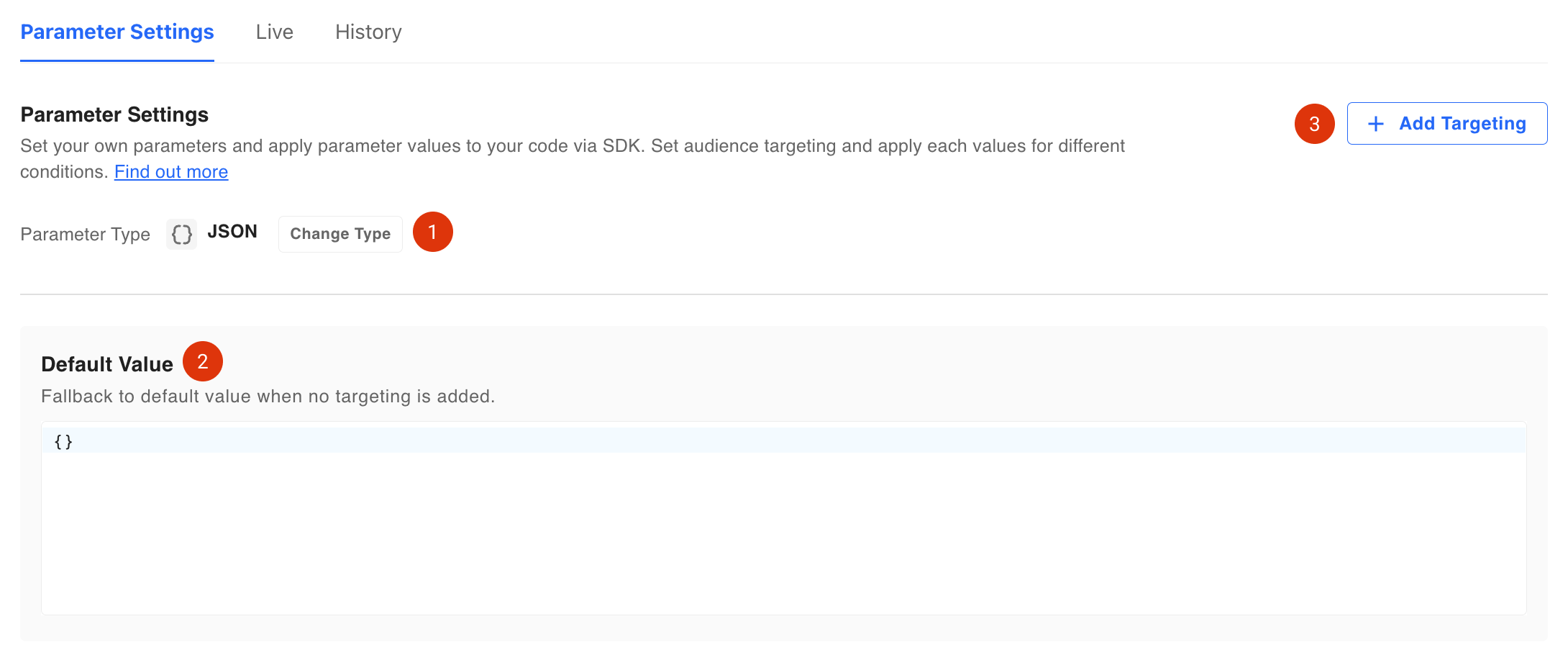
-
Parameter type
Check the parameter type you've selected to create the parameter here. You can change the parameter type through the change button but once you change parameter type, all value entered will be reset. -
Default value
Set the default value you wish to apply. All users will fallback to default value when no targeting is added. -
Add Target
Click Add Target to start audience targeting. Apply the desired value to specific users among all users.
Targeting
Composition of target rules and conditions
Important!Both the target rules and conditions consist of a combination of
property name + operator + property value.
For example, if you want to target Android users among mobile operating systems in a situation where users' operating systems are being collected via the property key osName, you can create the following combination.
- Property Key: osName
- Operator: One of the following
- Property Value: Android, android
The first combination created becomes the first (target) rule. Depending on whether you add another combination as an AND or an OR to these rules, you can create a target for a completely different user.
Let's take a closer look at the operators and AND/OR below.
Operator
Operators are used when setting conditions and serve to describe the relationship between property names and property values.
Hackle provides a total of 22 operators, you must select an appropriate operator according to the type of property value of the selected property name.
Please refer to the table below for more details.
| Operator | Property Value Type | Possible Number of Property Values |
|---|---|---|
| Is any of | String | Multiple selections possible |
| Is none of | String | Multiple selections possible |
| Starts with any of | String | Multiple selections possible |
| Starts with none of | String | Multiple selections possible |
| Ends with any of | String | Multiple selections possible |
| Ends with none of | String | Multiple selections possible |
| Contains any of | String | Multiple selections possible |
| Contains none of | String | Multiple selections possible |
| = | Number | Multiple selections possible |
| ≠ | Number | Multiple selections possible |
| > = | Number | Single selection allowed |
| <= | Number | Single selection allowed |
| > | Number | Single selection allowed |
| < | Number | Single selection allowed |
| When True | Boolean | Unselectable (operator includes property value 'True') |
| When False | Boolean | Unselectable (operator includes property value 'False') |
| version = | Version | Single selection allowed |
| version ≠ | Version | Single selection allowed |
| version > | Version | Single selection allowed |
| version ≥ | Version | Single selection allowed |
| version < | Version | Single selection allowed |
| version ≤ | Version | Single selection allowed |
Example
If you want to target a user who resides in Dallas city, you can define the following rule like this:
Creating a rule for [users residing in a metropolitan city]
- Property key: Region (The property value of the region is String type)
- operator: one of the following
- Property values for 'next' spoken by the operator: "Dallas Metropolitan City", "New York Metropolitan City", "Los Angeles Metropolitan City", "Chicago Metropolitan City", "Houston Metropolitan City", "Washington Metropolitan City"
Audience Targeting
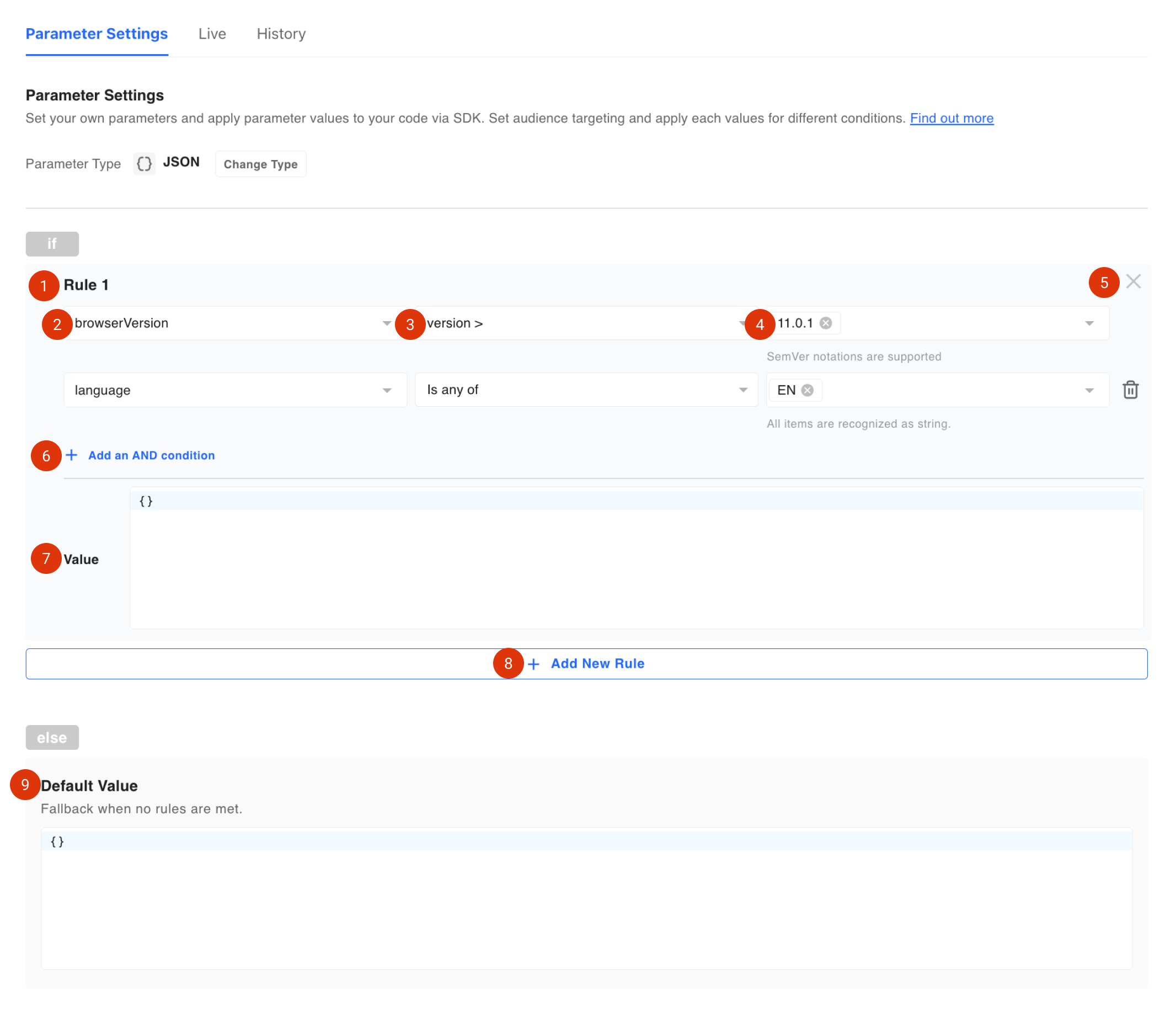
Add Parameter Targeting
You can set parameters and values as follows.
-
Rule
-
Property key
-
Operator
-
Property value
Depending on the operator, you may select more than one values or no values. -
Delete rule
-
+ Add an AND condition
Click this button to add another AND condition to the rule. -
Value
Set the value you would like to apply to the users who meet all the conditions. -
Add New Rule
Click this button to add a new rule. -
Default Value
Set the default value you wish to users when no targeting is added.
Live Tab
Real-time exposure status
You can view the number of users who have met the on or off status of the feature flag within the last 30 minutes, and information about those users (time, user identifier value, status).
Update button is activated every 30 seconds, so if you want to know the latest status, you can update by pressing the button.
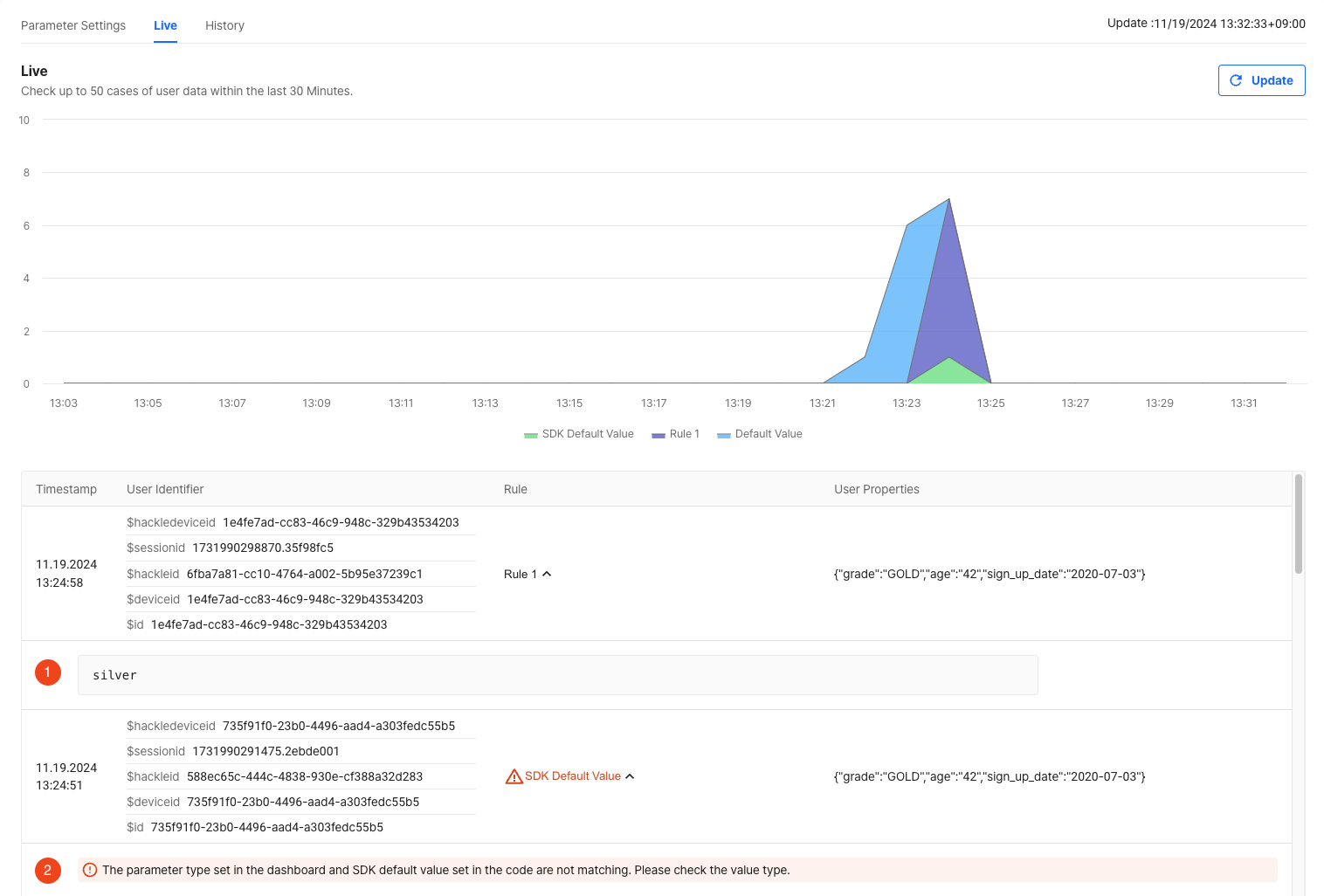
Rule
-
Value
Check default value and values set for each rules. -
SDK Default Value
When it's not normally distributed, the default value of SDK setting is exposed. You can check the details of error information.
History Tab
Remote Config changes are logged in chrnonological order.
Preview history of items created and modified by other collaborators.
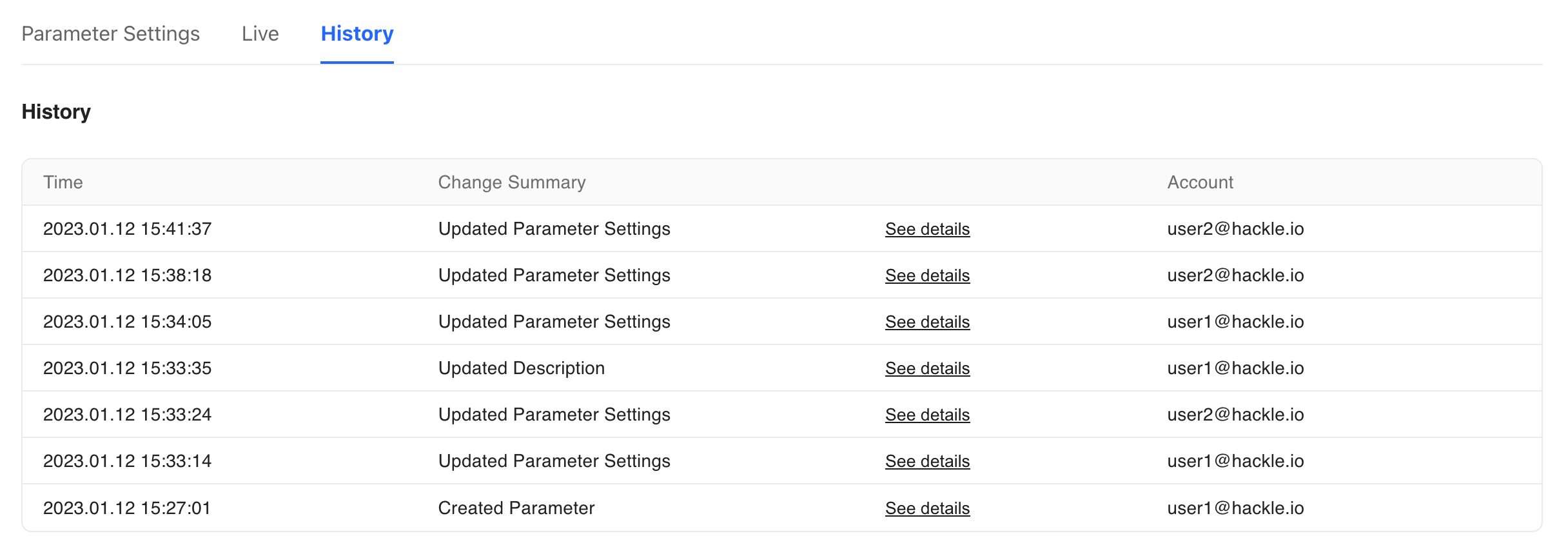
Click See details to check the detailed record of changes made in your parameter.

Archive remote config
- If you no longer need a particular parameter key, you can archive it.
- Up to 20 active parameters can be used simultaneously. It is recommended to archive any parameters that are not in use in order to create new parameters.
Please note that once a parameter key is archived it cannot be reused.
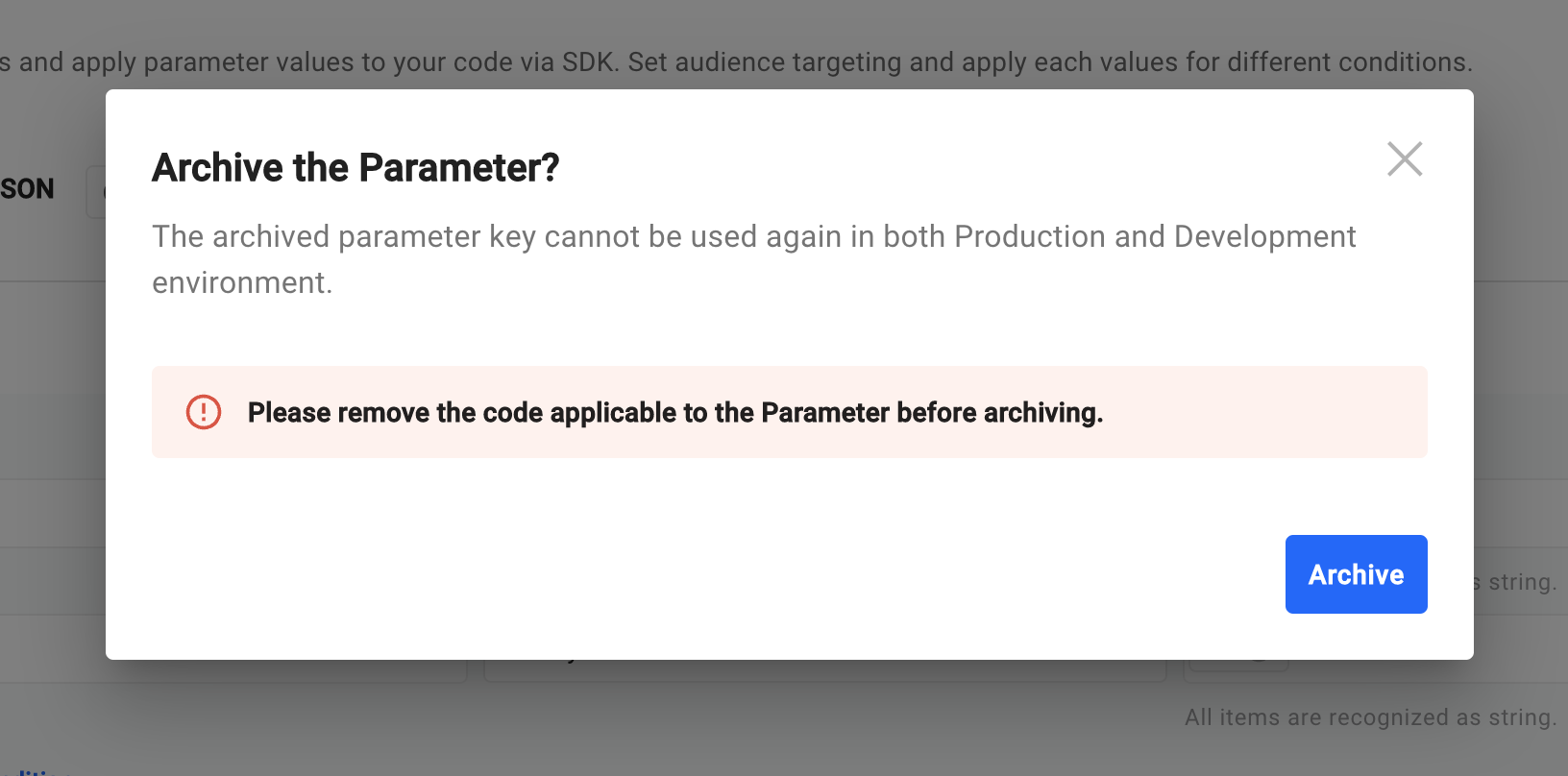
Archiving parameter
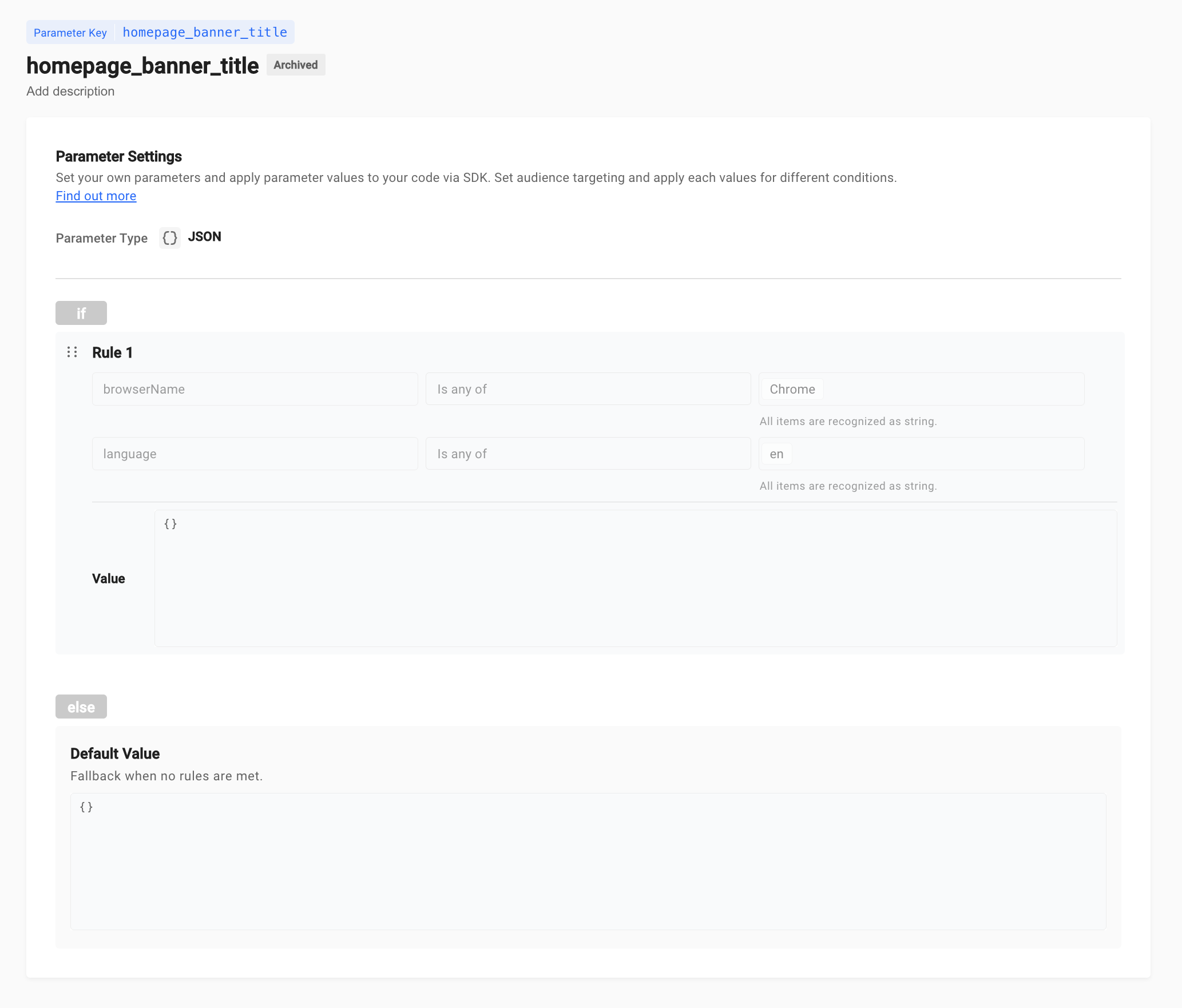
Archived parameter cannot be reused
Updated 4 months ago
